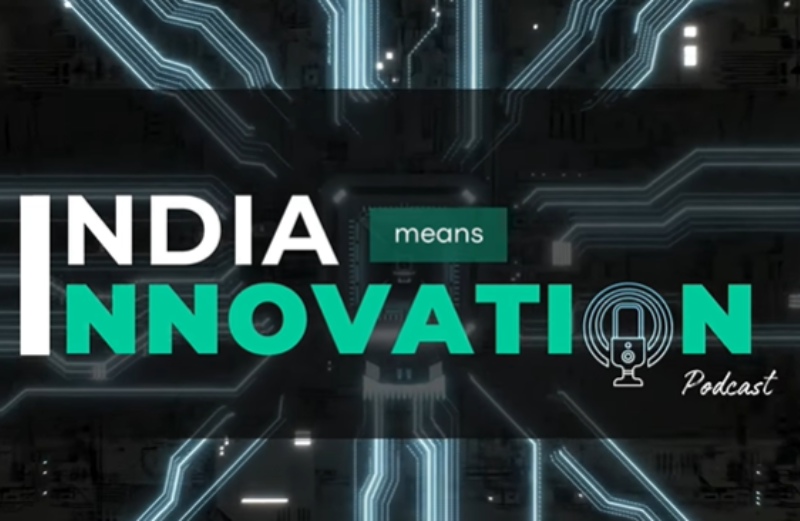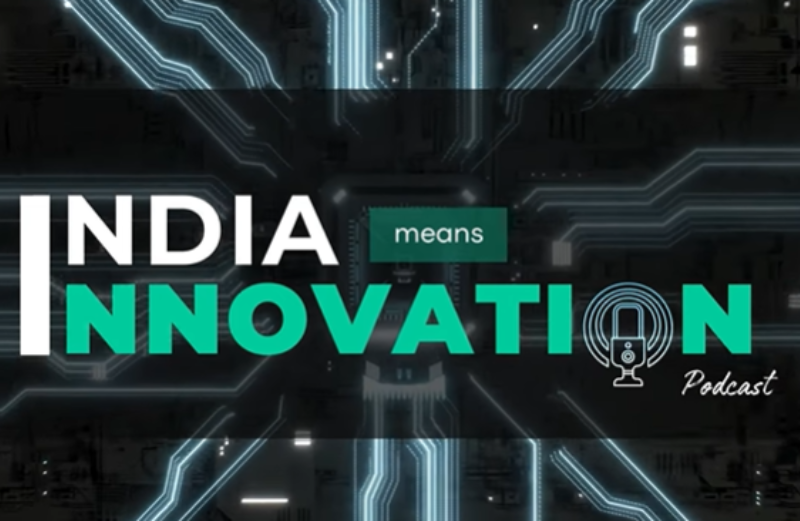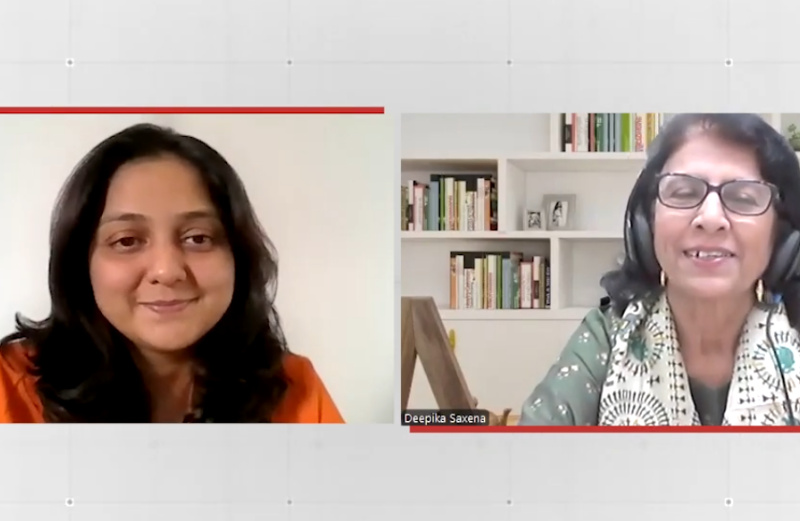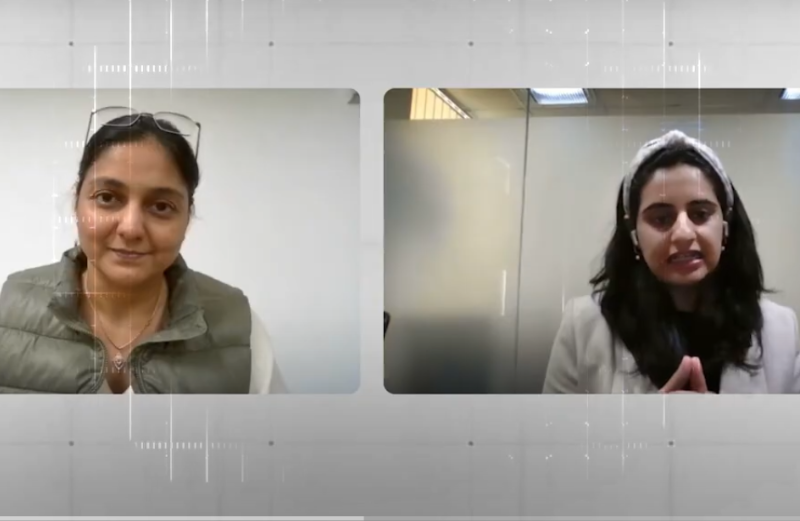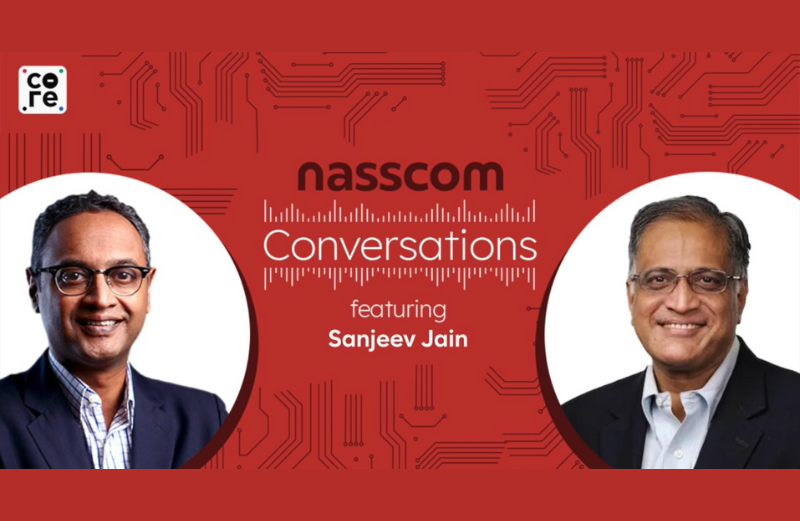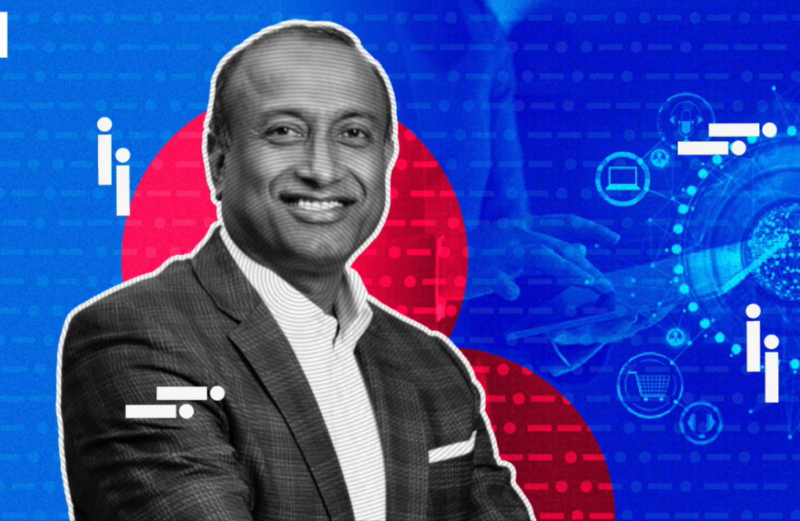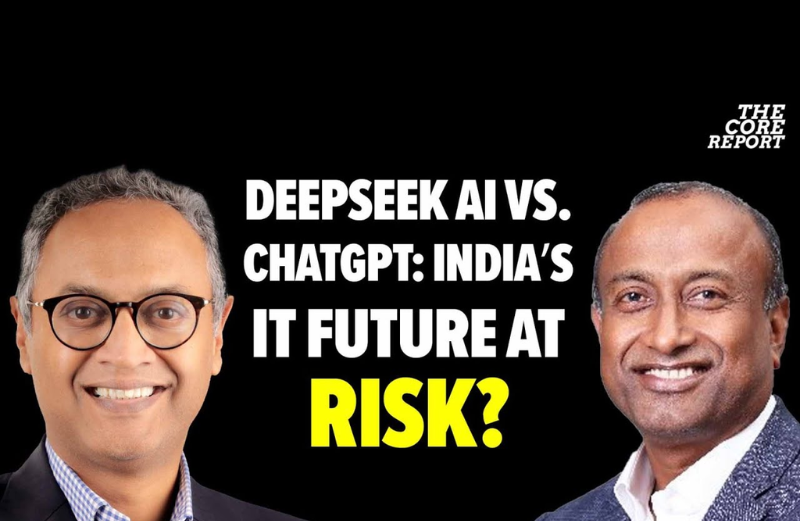Transcript Disclaimer: This transcript has been generated using automated tools and reviewed by a human. However, some errors may still be present. For complete accuracy, please refer to the original audio.
00:00:10 SNEHIL GAMBHIR
Welcome to Nasscom BCG's India means innovation podcast. We're excited today to have as my guest technologist, a foodie, a multifaceted leader, and a truly global citizen, Vijay Sankaran. He is the Vice President and Chief Digital and Information Officer, Johnson Controls. Vijay, welcome to the podcast.
00:00:32 VIJAY SANKARAN
Yeah, thank you so much, Snehil, for having me on the podcast and I look forward to our conversation.
00:00:37 SNEHIL GAMBHIR
Wonderful, wonderful. Why don't we get started maybe with the bigger picture? From your vantage point, how do you see the global landscape of buildings and infrastructure evolving, especially in the light of smart buildings, automation, AI and then the sustainability layer that goes on top. What are the key trends that you're watching over and actually helping shape at jci?
00:01:04 VIJAY SANKARAN
Yeah, that's a great question, Snehil, and something that I'm very passionate about and we're very passionate about at Johnson Controls. I've been a technologist for a very long time and I've seen the digitization of many different industries over the years. And in most cases, it's just a matter of timing when an industry is ready for and ripe for digitization. And, and the era of the digitization for buildings is really upon us. And there's really a confluence of major drivers that make the ingredients ripe for driving that transformation. And those include, as you mentioned, the optimization of energy inside of buildings. As, you know, the energy costs globally continue to rise and people are looking for different ways to make buildings much more efficient that the decarbonization that's required in order to offset carbon emissions that are being generated from buildings, including the actual materials that are used to build buildings. 40% of all greenhouse gas emissions come from buildings across the planet. You know, the scarcity of labor to actually fix buildings as well as, you know, the just the need to create a different kind of experience for people who occupy these buildings. The post pandemic wave. So you put all of these things together and it spells out the need to leverage technology and digital and AI and data to treat buildings like many under many other industries have, whether that's manufacturing plants or, you know, airlines or automotives or anything like that. And so we are at Johnson Controls, you know, with our open blue platform at the forefront of really, you know, unlocking those value propositions using digital technologies and AI. So it's something that, you know, we see as an accelerating trend, you know, as we go forward.
00:03:10 SNEHIL GAMBHIR
Got it. You know, innovations historically and traditionally were spaced out over a period of many, many years, often decades. In contrast, in the digital world, with predictive Maintenance and digital twins. We're seeing a rate of compounding which is fairly aggressive. Do you see or foresee any challenge in keeping up to this fast rate of innovation from your lens and as a competitive advantage for you with your peers and the broader industry?
00:03:43 VIJAY SANKARAN
I think it's a great question, Snehal. And I mean, it's always a challenge to keep up, you know, with the, the pace of the, the wide variety of different companies that innovate in the space. So you have traditional buildings, players like ourselves, and you know, Siemens, Honeywell, Trane Carrier, but then you really also have the multitude of startups, which I think are, are where a lot of really interesting things happen. And you know, with startups, there's external capital investment, there's often this, you know, general scrappiness and agility that exists, you know, and sometimes difficult to replicate in a larger organization. And so, you know, we spend a lot of time really understanding what interesting companies are doing. Sometimes we acquire those interesting companies like we did with FM Systems a few years ago or Foghorn a few years prior to that, to really bolster both our capabilities as well as our culture. And then we try to embrace that sort of scrappy startup type of a mindset, really bringing in talent to focus on AI and innovation. We have one of our most innovative teams here, right here in Pune in India that operates and leads the transformation for our OpenBlue platform, as well as a small team in Bangalore that, you know, we're really excited about and, you know, they, they operate with that, that nimbleness and agility that, you know, many startups do.
00:05:17 SNEHIL GAMBHIR
Got it, got it. You know, I, I read somewhere that you had a quote that said digital is the differentiator behind our technology. Right? As smart infra generates this massive volumes of data, what is your approach to modernization of data platforms? With cloud and there's obviously edge computing and AI, is there a particular approach you take to being able to get the value out of what your sensors are producing? And how is that transforming the industry and you competitively?
00:05:50 VIJAY SANKARAN
Yeah, I think the landscape of data is changing rapidly through, because, through and because of AI. And, you know, I'm a longtime data guy. I started my career in Data back in 1995, you know, when we were talking about hundreds of megabytes. And now we're talking, you know, petabytes and more. Right, hundreds of petabytes. And so the landscape of data has changed dramatically. And back then it was mostly structured data that had to go through, you know, a very rigorous, you know, extraction and transformation and standardization process. And now, you know, with, with LLMs and generative AI, everything is changing. Where you can do it on the fly, you can do it in real time. You got tools like Microsoft Copilot and Palantir and others out there that can really do some of that data wrangling, which was always one of the biggest challenges on the fly. And so we use a lot of those capabilities now in the way that we onboard buildings, we look at the telemetry coming off of buildings. We acquired an edge AI company, you know, Foghorn, that processes more information at the edge. We try to use our cloud platforms to normalize the data with, you know, standard ontologies like brick and Haystack in the cloud, to, you know, be able to compare one building versus another in a standardized way. But underpinning all of that is AI in terms of, you know, how we onboard those buildings. We built a tool called robot which onboards the buildings, leveraging AI based technologies and standardizes the data flows. We have now a generative AI advisor for building operators that basically take the fault codes from inside the buildings and translates that, so to speak, into what is the actual fault in the building and what are the recommendations to actually go fix those faults. So the world is changing very quickly and you know, I can't underestimate, you know, the power that generative AI, you know, brings to the table for organizations. You know, having been part of this for a long time, you know, I fast forward five years and I mean, you know, the world will be dramatically changed as we know it, just based upon, you know, the introduction of, you know, LLM based technology and agentic AI now over the next five years, you.
00:08:15 SNEHIL GAMBHIR
Know, we'll come back to that in a second. But I think you, you know, you gave me a good segue to your past about senior leadership roles at Ford. And you know, a lot of what we see today in what people can probably see and feel is more of the advancements in the automotive space. Right. If you look at the spectrum of how digital data and AI is being applied in this new world of self driving cars, et cetera, are there some parallels of what you're able to bring from that world here or what can go from here to there more more broadly as a technologist that you see and can almost chart out how life will be for a lot of the consumers across the globe in the next five years?
00:09:01 VIJAY SANKARAN
Yeah, I mean, so first of all, I think in the building space in particular, I'm glad that buildings don't move because Solving the autonomous building problem is certainly a lot easier than solving the self driving car. But in many ways that the whole notion of, you know, we're moving from a society of reacting to data, moving into a society of the data being proactive on behalf of the humans consuming the experience. And so let me give you an example, right? You know, I've had, I've had a Tesla in the past and one of the things I loved about the Tesla was the fact that it's proactive in terms of what's happening. And you see that a lot in, in many vehicles now where it tells you that there's traffic forthcoming. Would you like to take an alternate route or, you know, now with more computer vision, you know, that there's an object in front of you. Would you like, you know, it automatically slows you down, right? And I think it's that the proactive nature of digitization that we're on the cusp of going forward because versus the reactive nature of digitization and data where it's, it's dashboards and it's, you know, it's, it's indicators and things like that where it's like, okay, I'm looking at my health score, you know, I got a 35 today, right? Rather than, okay, well, what am I, what is the, the software proactively telling me to do in order to get, you know, a 75 instead of a 35, right. In terms of my health score. And so it's that, it's that proactive nature which I think you saw in industries very early, like automotive, because you were working in a situation where due to maybe safety related concerns or you know, optimization of routes, you saw proactive information being delivered. But now you're seeing that much more pervasively across all industries and then bringing that back to, you know, smart buildings. That's exactly what, you know, our customers are telling us that they want, is that they want to proactively be notified when a chiller is about to go down. They want to be proactively notified when there's a fan coil in the building that is causing water in my bathroom. They want to be notified what the expected pattern is for employees coming back into the office on a given day so that they can heat it or cool it appropriately and not have to run, you know, that chiller or boiler at full, full throttle the entire time. Right? So it's that proactive nature of digitization that is the big change and shift. And then adding on to that with, with AI, you know, a much more rich you know, set of instructions on, you know, how to prepare for that proactive event. And so that's what's, like, amazing about what's going on right now is that proactive shift to digitization.
00:12:05 SNEHIL GAMBHIR
That's awesome. And I think, you know, coming back to our, our confluence point and data, what are some of the challenges from a data security lens that, you know, and you see all these Hollywood movies of things that can be remotely hijacked and what have you?
00:12:24 VIJAY SANKARAN
Right.
00:12:25 SNEHIL GAMBHIR
Tell us a little bit more about how do you see that playing out and what are your approaches to being able to make sure this is a very tight ecosystem that gives all that stuff that you just outlined, but with the right amount of controls for both providers and for employees and other people that reside?
00:12:47 VIJAY SANKARAN
Yeah, well, I know that after watching Mission Impossible recently, everybody's a little bit concerned about AI taking over the world. And so, you know, fortunately, I don't think that we're quite at that stage yet, but I've also seen Minority Report recently on an airplane, so I think I'm in the same mindset that you're in, and I have board members that are, you know, have those same, same sort of concerns. And so I think it's all about thinking through, you know, the architecture of the system and ensuring that you're not sort of leaving to the imagination what AI is doing on your behalf and putting the appropriate guardrails in. Right. So as an example, you know, when you're putting in a prompt, you know, into an AI design system, you know, how are you ensuring that, you know, that prompt hasn't been manipulated? Where did that prompt come from? You know, similarly, what are the data sources that you're, you're prompting against? What are the data sources that you're retrieving from? And so, you know, two things I'm very passionate about, you know, in my, my career are data analytics, you know, expert systems, AI and also architecture. And so I truly believe that, you know, architecture, whether it's business architecture, systems architecture, data architecture, really are that framework that allows you to build safe systems. And so, you know, at Johnson Controls, you know, we put a lot of energy and emphasis into, you know, both selecting the providers that help us in terms of building those systems. We use the Microsoft platform heavily in terms of deploying our AI, you know, where does that data reside? So I think it's really important that you invest in the right data lake architecture, the right architecture for supporting the ingestion of data. You have to understand where that data was sourced from and Then really, you know, data cataloging. So I think holistically, it's really important that you invest in a foundational architecture and understand, you know, how your problems are being solved, you know, across the ecosystem. And then that way it's, it's very much more defensible, explainable, you know, the likelihood that risks manifest themselves is, that is when you don't have a structure, you know, that basically you understand where the risks exist and proactively mitigate those risks.
00:15:32 SNEHIL GAMBHIR
That's reassuring. Vijay, maybe we switch to India next for a second or two. BCG and Nasscom did an extensive study putting out a Vision 2030 document around the ernd advantage in terms of talent and research and digital innovation and how India can be sort of almost the center of that. Right. Talk to us a little bit about Johnson Control's India presence, more from an R and D and a digital lens, and we'll come to the business in a second. But what do you see India in your global vision in terms of driving product and digital innovation and engineering excellence from a Johnson Controls lens, please.
00:16:20 VIJAY SANKARAN
Sure. That's a great question. So first of all, I have been, you know, doing business in India as it relates to digital and R d since about 2006 and when I first set up, you know, an operations center in Chennai with Ford Motor company. And so I've been able to see the evolution of India shifting from primarily sort of a shared service into, you know, an R and D and innovation hub for multinationals globally. And to watch that transformation is amazing. And I would say pound for pound, I'd match the talent here versus anywhere on the planet Earth in terms of the innovativeness and the cultural savvy. And the can do attitude of the talent that exists here and nowadays is not just from the iats of the world, but it's also from, you know, the Maharashtra Institute of Technologies and, you know, more local and regional universities that provide that kind of talent. So first of all, the talent is amazing here, you know, for Johnson Controls. You know, we have been in India for, you know, well over a decade at this point in time. You know, this center in Pune was, was established, you know, over 10 years ago. We have had engineers in, in Pune and now Bangalore and some in Mumbai really working to innovate some of our most critical products. So a large part of our controls development for Medicis, you know, is done here in Pune and Gurgaon as well. A lot of our security, product investment and R and D is done here as well as, as FHIR and you know, in the early 2000s, you know, we started all of our digital platform developments here in terms of, of Open Blue as well. And so, and the predominant investments around Open Blue and development and innovation is all done here in Pune and in Bangalore as well. And so we have, we are very strong believers in the value that gets created out of the talent pools that we have in our sites in India. And I will say, you know, I come here at least twice a year to these sites to visit the teams. I'm always energized when I, when I come here, just about the can do attitude of the teams, the willingness to experiment and try new things and pivot and the agility. So it is actually, I would say, the one place in the planet where, you know, you see all of the R and D of Johnson Controls, you know, come together. So that's pretty impressive.
00:19:06 SNEHIL GAMBHIR
That's awesome. You know, I'd love to talk a little bit about the culture of innovation, but linked to that is what I would call co innovation. Right. One of the things we see across the world is a lot of startups, and you mentioned it very early on, doing a lot of cool stuff. Are there any particular examples and models where you are working with ecosystem partners or startups with the idea of co innovating and has any of that translated to something of that kind even in India?
00:19:38 VIJAY SANKARAN
Yeah, I mean, we explore a lot of different opportunities to co innovate around digital. And you know, we have had a long relationship with Accenture as an example around, you know, some of our, you know, employee experience innovations. That team has largely been based in Bangalore that, you know, we, we work with them around. And the, our companion product which, you know, is really focused around, you know, how employees can have everything from personal comfort to food and beverage ordering to now, you know, integrated into a robot for a big Middle Eastern customer, is all done through some co innovation that we did with Accenture. So we had set up a relationship back in 2022 to create sort of an open blue innovation center in Bangalore with them. And so that has really borne some positive fruit in terms of that co innovation. And just like that, we're exploring opportunities for co innovation with other partners based in India as well.
00:20:47 SNEHIL GAMBHIR
That's great. One of the key things or the flip side to innovation or success is failure.
00:20:54 VIJAY SANKARAN
Right.
00:20:54 SNEHIL GAMBHIR
How do you remove the fear of failure, you know, coming from a research and technology lens and encourage experimentation and almost sort of, you know, drive this kind of virtuous flywheel of being able to go out there and try the. What might seem like impossible. What's the spirit like here, both in Johnson Controls India and more globally across the tech.
00:21:17 VIJAY SANKARAN
I mean, that's what we talk about all the time, you know, as a team. And there's a book that I love called Little Bets. And, you know, Little Bets are. It's really about how do you make lots of small bets knowing that a large percentage of them will fail.
00:21:34 SNEHIL GAMBHIR
Yeah.
00:21:34 VIJAY SANKARAN
And then the ones that, you know are successful, you know, you then select and amplify, you know, to create those exponential results. So it's like the strategy of seed, select and amplify, you know, and so that's really what, you know, when I come here, I really try to, like, teach the teens, you know, around, you know, the power of. Of, you know, basically doing a lot of little things and then figuring out which ones create the most value and amplify that. We. I just did a. A Gemba yesterday, where Gemba's Japanese word for go see, you know, of the finalists from our tech challenge here in Pune, 17 different ideas that I walked from station to station, having each team do a pitch for me, you know, in terms of the value that is getting created through the technological bets that we're trying to make and then giving them all feedback around, you know, you know, whether or not, you know, the. It connects back to the value proposition for the business. Many of those ideas, they won't, you know, make it to market, but that's okay. You know, sometimes it's the learnings that you take away from that and the recombination that, that you, you know, you. You take on for the next set of ideas that generate that breakthrough through concepts. I mean, that's really ultimately what innovation is all about at the end of the day. And so we really want to encourage that here in the corporate culture.
00:23:09 SNEHIL GAMBHIR
Super, let's talk maybe as we come towards the end of the podcast about markets and opportunity from a market lens, and in India in particular.
00:23:20 VIJAY SANKARAN
Right.
00:23:21 SNEHIL GAMBHIR
So, I mean, how do you see as a commercial opportunity, the India market playing out for Johnson Controls, given the rapid urbanization as well as, you know, economic growth that India's been driving. Right. You know, now a world number four economy soon to be the top three. What does that mean from your business lens? And are there pockets that you think that you. You and your teams are looking to focus on?
00:23:47 VIJAY SANKARAN
I mean, I think when I look at the Indian market, I would say easily it represents, you know, one of the top five biggest opportunities for Johnson Controls, if not top three. And the reason I say that, you know, unfortunately, we are not entering an ice age on the planet anytime here in the near future. And the world is only getting hotter every single day. And climates and humidity, you know, are continuing to be volatile. And you know, having experienced India in the summer, you know, there's a deep need for cooling technologies, you know, across the street country where, you know, there's more and more demand for, you know, middle class, you know, experience luxury experiences and, and also for comfort, personal comfort, you know, in different facilities. So we're, we're in the cooling business. And so, you know, there's a great demand that's, that's emerging here in India for that, that's number one. Number two is, you know, you look at data centers and you know, the growth and appetite for, for data centers and AI based consumption and just general cloud consumption continues to rise at an exponential level. And when you look at the localization and nationalization strategies that are being adopted here, there's a lot more data centers that are going to be built all across this country in different ways. And again, you know, those facilities require technologies around, you know, cooling, air handling, air distribution, it's, which is a primary part of our business. So again, another large growth opportunity. And then finally, as you just generally look at the smart building space, in many ways, you know, India is a leader around wanting to drive more sustainability and more intelligence into buildings as we go forward. And so, you know, just in terms of digital platforms and controls, you know, you know, India continues to see growth in that particular lens. So we're super excited about the Indian market and you know, what, what our capabilities can create value here for customers and users of the technology. So it's an exciting time to be in India and see the growth here.
00:26:19 SNEHIL GAMBHIR
Wonderful. On that promising note, maybe we move to the end of our podcast with some rapid fire fun fact bits. So let me try and see how this works out. Right outside of India. What's your favorite country to visit?
00:26:35 VIJAY SANKARAN
Favorite country to visit? Well, I have been all over the world and maybe I'll talk about some of the fun places I've been to, but this past spring break I was in is in Europe. I was in France and Germany and I really always enjoy Germany because it's, you know, a perfect mix of culture and technological innovation that, you know, you don't find in many other places in the world.
00:27:04 SNEHIL GAMBHIR
That's not an as I expected, but that's great. Favorite food to eat.
00:27:09 VIJAY SANKARAN
Favorite food. That's easy. And maybe this is a place I'D like to go in the future, but I love sushi, so I would like to go to Japan at some point. It has. It's not a place. And again, going back to that efficiency and technological innovation is probably a place I'll enjoy.
00:27:25 SNEHIL GAMBHIR
Indeed. Indeed. I know you're a tennis buff. We spoke about it earlier. Alcaraz, Sinner.
00:27:32 VIJAY SANKARAN
How about Djokovic? I'm still old school man, so, you know, I missed the big big four and you know, those were formative years of my tennis experience. So. Yeah, I. I don't know, I just can't get as motivated into the Akaras and center. Maybe they're just too good. You know, it's like they're like the AI of tennis 22 and 23.
00:27:55 SNEHIL GAMBHIR
So that's some tennis out there, right? Vijay, it's been a pleasure talking to you. I want to wish you and the Johnson Controls team the very best in your innovation journey. And I really look forward to catching up again with you soon.
00:28:09 VIJAY SANKARAN
Thanks so much. Snehil and I look forward to our next interaction together.
00:28:13 SNEHIL GAMBHIR
Wonderful.



